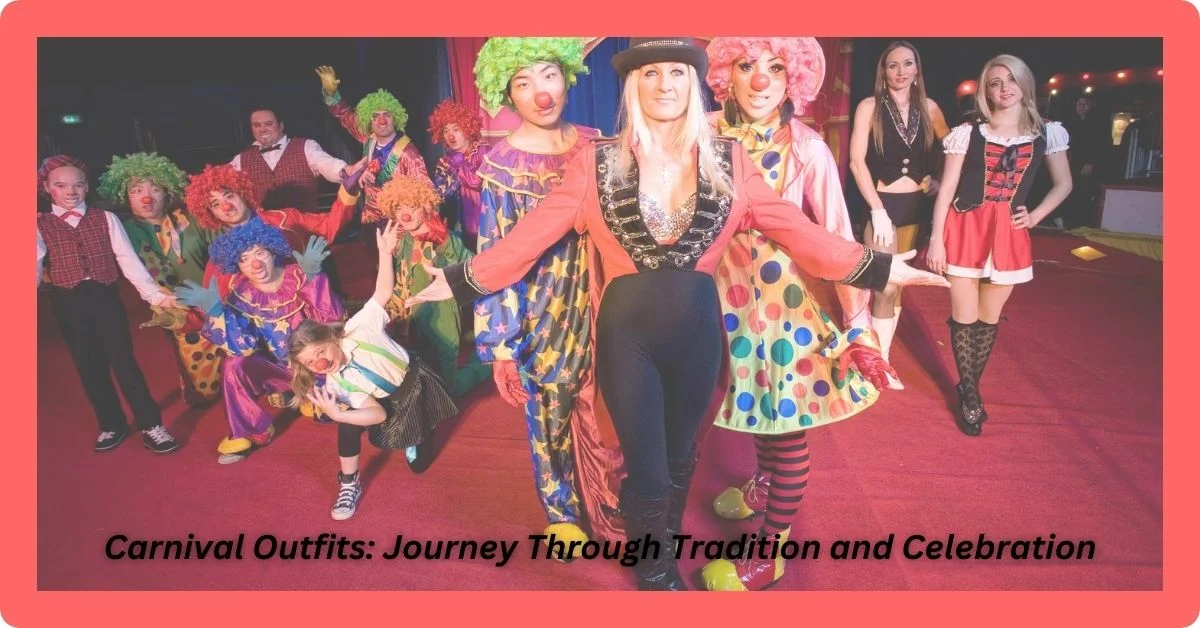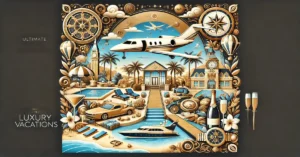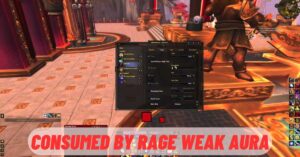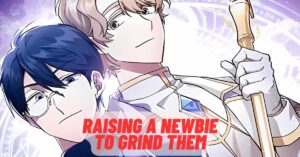Carnivals are among the most vibrant, exciting, and culturally significant celebrations around the world. From the streets of Rio de Janeiro to the heart of New Orleans, carnival celebrations bring people together to embrace joy, freedom, and creativity. One of the most striking features of any carnival is the carnival outfits. These costumes play a central role in setting the tone for the festivities, combining elements of tradition, culture, and artistic expression.
Whether you’ve experienced a carnival firsthand or simply admired the mesmerizing costumes from afar, it’s impossible not to be captivated by the ingenuity and craftsmanship that goes into designing these vibrant outfits. This article will take you on a journey through the world of carnival outfits, exploring their origins, the significance behind the designs, and how these colorful ensembles are brought to life. By the end, you’ll have a deeper understanding of the art and culture behind carnival costumes, and perhaps be inspired to design your own.
The Origins of Carnival and Its Outfits
To truly appreciate carnival outfits, it’s important to understand the historical context of the carnival itself. The term “carnival” derives from the Latin words carne (meat) and levare (to remove), which alludes to the tradition of fasting and abstinence before the Christian season of Lent. Historically, carnival marked the final days of feasting and revelry before the solemn period of Lent began. These celebrations often involved parades, dancing, and wearing elaborate outfits, and they were a way for people to escape the routine of daily life and embrace a sense of freedom.
Cultural Significance of Carnival Costumes
The carnival outfit is not merely a piece of clothing; it is a symbol of cultural pride, creativity, and often, a deep connection to the wearer’s heritage. Across different parts of the world, these costumes carry unique meanings and reflect the traditions of the region.
For example, in Brazil’s Rio Carnival, the iconic samba costumes are often designed to highlight the body’s movements and embody the sensuality of samba dance. These costumes are typically adorned with feathers, sequins, beads, and bold colors, creating an extravagant visual spectacle. The samba schools, which are responsible for the massive parades, dedicate countless hours to designing and crafting these outfits. They are a visual representation of the energy and spirit of the carnival itself.
In other regions, such as the Caribbean or Europe, the carnival outfit may incorporate elements from local folklore, mythology, and colonial history. For example, the costumes worn during the Trinidad and Tobago Carnival include intricate masquerade outfits that often feature fantastical creatures, masks, and armor, representing a blend of African, Indian, and European traditions.
Key Elements of Carnival Outfits
While carnival outfits vary greatly depending on the region, there are several key elements that are commonly found across most cultures.
1. Bright Colors and Fabrics
One of the most defining features of carnival outfits is their use of bold, bright colors. These vibrant hues reflect the celebratory spirit of carnival, and they often signify different cultural or personal meanings. For instance, the color red might represent passion, while gold signifies wealth and grandeur. The choice of fabrics also plays a critical role in bringing these costumes to life. Silk, satin, and sequins are commonly used for their ability to catch the light and enhance the outfit’s visual appeal.
2. Feathers and Sequins
Feathers and sequins are staples of many carnival outfits, adding an element of movement and sparkle. Feathers are often incorporated into headpieces, shoulder pads, or skirts, creating a dramatic, fluid look as dancers move through the streets. The sequins reflect the sun, making the costume shine brightly during the daytime parades. These materials, while glamorous, also represent the artistry involved in creating carnival outfits.
3. Masks and Headdresses
Masks and headdresses are a common feature in carnival outfits, especially in masquerades. Masks serve both practical and symbolic purposes. On the one hand, they conceal the identity of the wearer, allowing for freedom of expression without social constraints. On the other hand, masks often have a symbolic meaning, representing gods, spirits, or fantastical creatures, depending on the carnival’s cultural background.
Headpieces are often intricate and elaborate, designed to create a regal or fantastical appearance. They may be adorned with feathers, rhinestones, or even sculptural elements to make the wearer stand out in the crowd.
4. Body Suits and Skirts
In many carnivals, the carnival outfit consists of body suits, which are often designed to accentuate the dancer’s movements. These outfits might include crop tops, bikini-style costumes, or form-fitting leotards, especially for dancers performing samba, calypso, or other rhythmic dances. Skirts and flowing pieces are frequently used to add dramatic flair, allowing the wearer to spin, twirl, and move in sync with the music.
5. Footwear and Accessories
Shoes and accessories are also key components of carnival outfits. Heeled shoes, sandals, and even bare feet are common choices, depending on the type of performance. Accessories like bracelets, necklaces, and body chains are often used to complement the overall look, adding layers of sparkle and flair.
The Design Process of Carnival Outfits
The creation of carnival outfits is a meticulous and time-consuming process. Costume designers and artisans dedicate countless hours to crafting each piece, ensuring it not only looks spectacular but also functions for the wearer’s comfort during long days of dancing and celebrating.
- Inspiration and Concept
Designing a carnival outfit begins with inspiration. Designers often draw from cultural symbols, mythology, or the theme of the carnival itself. For example, the Rio Carnival features costumes that are inspired by Brazil’s indigenous cultures, tropical landscapes, and festive traditions. Designers sketch out ideas, often combining elements of nature, animals, and spiritual symbols.
- Materials and Construction
Once the design is finalized, the materials are selected. This can include anything from luxurious fabrics to found materials, depending on the budget and the vision for the outfit. Artisans will then construct the pieces, sewing intricate details like sequins, beads, and feathers onto the fabric. Depending on the complexity of the design, this process can take months of preparation.
- Fitting and Adjustments
Given that carnival dancers often perform demanding routines, the outfits must be comfortable and functional. Fittings are essential to ensure that the carnival outfits allow for a full range of movement without sacrificing style. Adjustments are made to ensure that each piece stays in place while the performer dances through the crowds.
Popular Carnival Celebrations Around the World
While carnivals are celebrated globally, each region has its own distinct traditions and carnival outfits. Here are some of the most well-known carnivals:
1. Rio Carnival (Brazil)
The Rio Carnival is the largest and most famous carnival celebration in the world. It attracts millions of visitors annually, and the samba schools prepare elaborate floats and costumes for their performances. The costumes, characterized by feathers, rhinestones, and sequins, are designed to dazzle and delight the crowds.
2. Mardi Gras (New Orleans, USA)
Mardi Gras is a world-famous carnival celebrated in New Orleans, Louisiana. The iconic costumes often feature colorful beads, masks, and feathers. Parades, masquerade balls, and street parties fill the city, and the carnival’s historic traditions are celebrated with music, dancing, and theatrical performances.
3. Trinidad and Tobago Carnival
Known for its lively atmosphere, the Trinidad and Tobago Carnival features intricate masquerade costumes, body paint, and feathered outfits. It’s a melting pot of Caribbean culture, with influences from African, Indian, and European traditions. Participants in the carnival wear costumes designed to reflect the country’s history, folklore, and traditions.
4. Notting Hill Carnival (London, UK)
The Notting Hill Carnival is Europe’s largest street festival and takes place every August in London. Known for its vibrant costumes, Caribbean-inspired music, and performances, the carnival is a celebration of Afro-Caribbean culture. The outfits are often a fusion of traditional Caribbean elements and contemporary fashion.
5. Venice Carnival (Italy)
The Venice Carnival is famous for its elaborate masks and elegant costumes. Unlike other carnivals, the Venice carnival has a more sophisticated and mysterious air. Participants often wear historical costumes, some dating back to the 18th century, with beautiful, ornate masks that conceal their identity.
How to Choose the Perfect Carnival Outfit
If you’re attending a carnival or designing your own outfit, selecting the right costume is crucial. Here are some tips:
- Consider the Theme – Many carnivals have themes that dictate the style and color of costumes. If there’s a particular theme, incorporate it into your outfit.
- Functionality and Comfort – Make sure your outfit allows you to move freely, especially if you plan to dance or participate in performances.
- Express Your Personality – Carnival is about self-expression, so don’t be afraid to choose something that reflects your own style and personality.
Conclusion
Carnival outfits are more than just costumes—they are a celebration of culture, creativity, and joy. Whether you’re dancing in the streets of Rio or attending a local festival, the vibrant and artistic designs of carnival outfits create an unforgettable spectacle. These costumes not only showcase the talents of designers and artisans but also embody the cultural significance and history of the carnival itself. As you embark on your own carnival journey, take a moment to appreciate the intricate work that goes into crafting these iconic outfits and the meaning behind them.
Frequently Asked Questions (FAQs)
- What are carnival outfits made of?
- Carnival outfits are often made of bright fabrics like silk, satin, and sequins, with embellishments like feathers, beads, and rhinestones.
- Why do people wear costumes at carnival?
- Costumes at carnival represent freedom of expression, cultural pride, and the festive nature of the celebration, often incorporating historical or folkloric elements.
- How long does it take to make a carnival outfit?
- Depending on the complexity, it can take several weeks or even months to design and create a carnival outfit, particularly for large-scale parades.
- What is the significance of feathers in carnival outfits?
- Feathers symbolize beauty, freedom, and movement. They are often used in headpieces or skirts to add dramatic flair and highlight the dancer’s movements.
- Are carnival costumes expensive?
- Yes, especially for larger-scale events like the Rio Carnival. High-quality materials, intricate designs, and the labor involved can make these costumes quite expensive.
- Can I wear a carnival outfit to any celebration?
- While carnival outfits are typically worn for carnival celebrations, they can be worn to any event that calls for vibrant, festive attire or themed parties.









